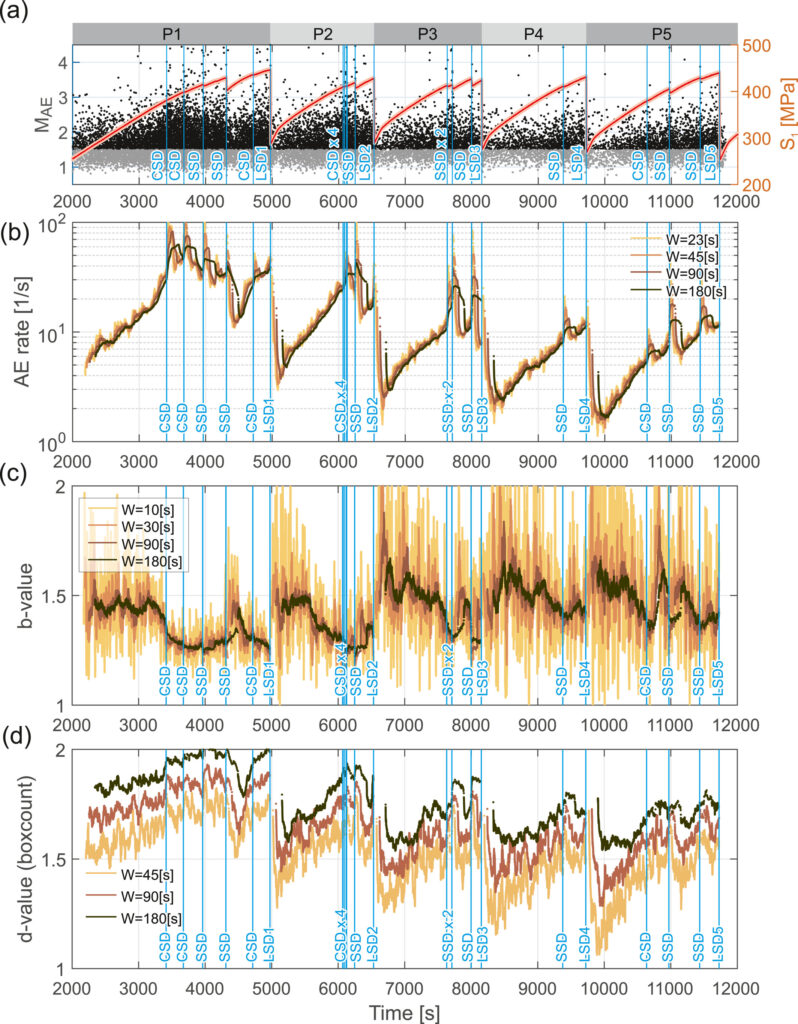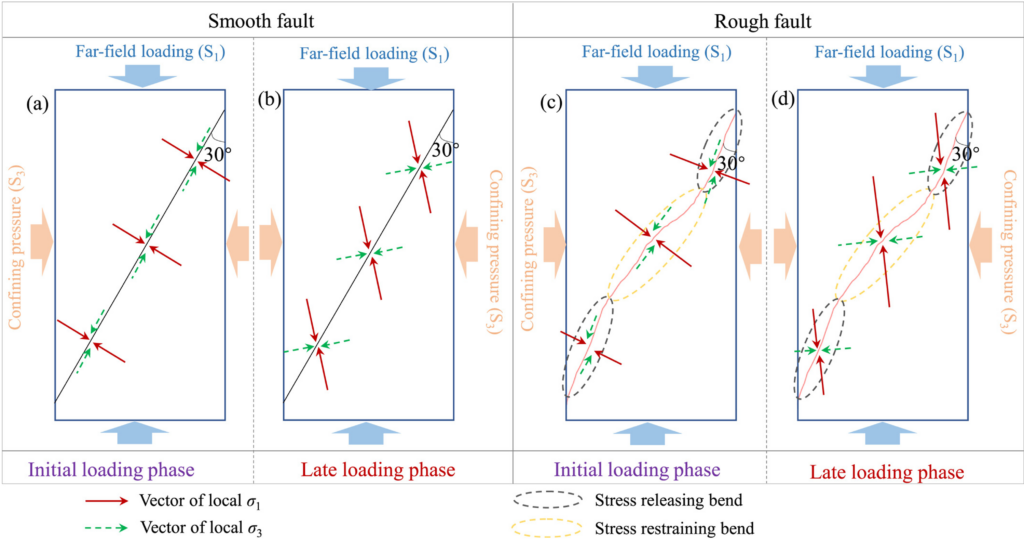Earthquakes in the Lab
Laboratory experiments suggest that the evolution of in-plane shear rupture along an interface separating two elastic blocks typically shows a transition from slow to fast slip. In contrast to the commonly used continuum mechanics-based approaches, here we study the shear rupture process along a weak interface using the discontinuous deformation analysis (DDA) method. We incorporate a slip-weakening constitutive friction law to simulate the initiation and propagation of shear rupture under external conditions of a constant normal load and a steadily increased shear load. As the shear load increases, our modeling results reveal a sharp transition from episodic expansion and arrest to unstable runaway rupture, consistent with previous experimental results. In the stage of dynamic runaway, rupture velocity is limited by the Rayleigh wave velocity. We further investigate the effects of external loading conditions including load point velocity and normal stress on rupture behavior. We find that the dynamic rupture velocity increases with load point velocity and normal stress, also consistent with previous studies. Our results indicate that the DDA method can well capture some of the general characteristics of shear rupture process and, hence, can be applied to study other aspects of dynamic shear ruptures.
We discuss data of three laboratory stick-slip experiments on Westerly Granite samples performed at elevated confining pressure and constant displacement rate on rough fracture surfaces. The experiments produced complex slip patterns including fast and slow ruptures with large and small fault slips, as well as failure events on the fault surface producing acoustic emission bursts without externally-detectable stress drop. Preparatory processes leading to large slips were tracked with an ensemble of ten seismo-mechanical and statistical parameters characterizing local and global damage and stress evolution, localization and clustering processes, as well as event interactions. We decompose complex spatio-temporal trends in the lab-quake characteristics and identify persistent effects of evolving fault roughness and damage at different length scales, and local stress evolution approaching large events. The observed trends highlight labquake localization processes on different spatial and temporal scales. The preparatory process of large slip events includes smaller events marked by confined bursts of acoustic emission activity that collectively prepare the fault surface for a system-wide failure by conditioning the large-scale stress field. Our results are consistent overall with an evolving process of intermittent criticality leading to large failure events, and may contribute to improved forecasting of large natural earthquakes.

